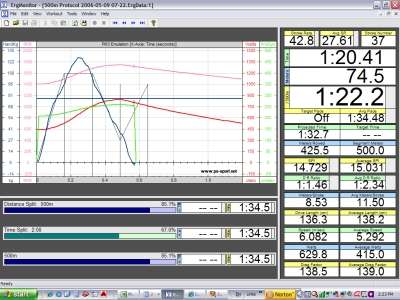Nice math.Citroen wrote:Most of the Concept2 maths (from the days of PM2s on model Bs) is discussed in some detail at http://www.atm.ox.ac.uk/rowing/physics/ergometer.html
As I thought the power is a cubic law, to spin the flywheel twice as fast you need 8 times the power.
Of interest was the difference between the static and dynamic Erg set-ups.
Also the effect on rating...
13. Effect of Rating
Note that the rate appears as a cube term: changing the rate from 30 to 36 (a factor 1.2) results in a factor (1.2)3 = 1.7 increase in power loss. Similarly, rating 24 rather than 30 consumes (0.8)3 = 0.5 - only about half as much power is lost.
What is also clear is that say if you can row continuiously at 2:00ave/500M pace at say 19 SPM you have a definate advantage over rowing the same pace at say 32 SPM.
With my weight at 100kg and the above rates, the saving are significant with wasted power dropping from 60W down to just 13W (just to move my body back and fourth on the slide not even holding the handle) for my 19SPM 2:00ave/500M 60min training rows.
Interesting stuff, thanks for the link Citroen.


